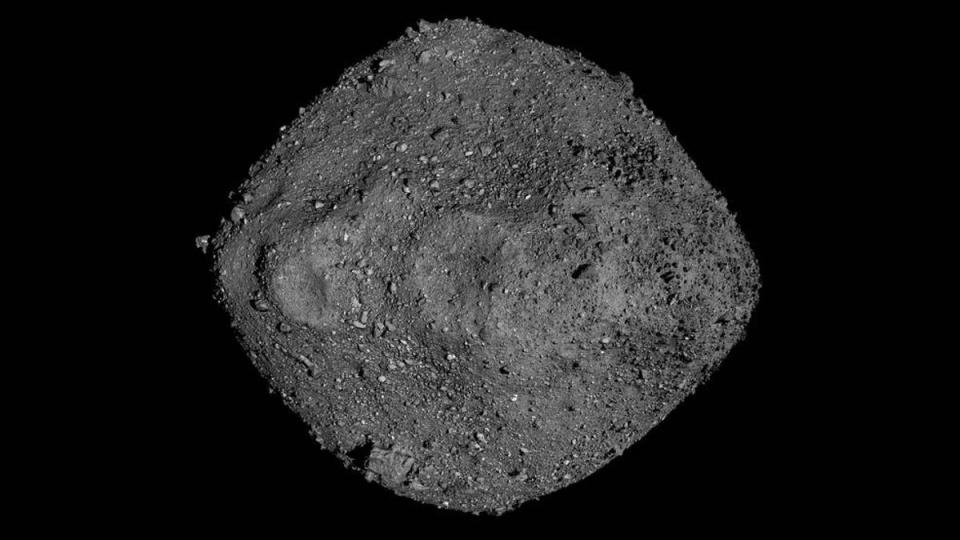Scientists discover why asteroid is ejecting material – but not how it is doing it

Scientists have finally discovered what the material that is being spat out of an asteroid is – but not exactly how it is happening.
The discovery is a step towards understanding a phenomenon that has puzzled scientists when it was first discovered in 2019.
The mystery began when Nasa’s Osiris-Rex spacecraft sent back images of something that had never been seen before: the asteroid Bennu, which it had been studying, was shooting out collections of rocks the size of marbles.
An asteroid had never been spotted behaving in such a way before. And scientists remain puzzled about why exactly it happens.
But scientists have now found a similar process in a meteorite that fell to Earth, and which might help understand what is going on inside that distant asteroid.
“It’s fascinating to see something that was just discovered by a space mission on an asteroid millions of miles away from Earth, and find a record from the same geological process in the museum’s meteorite collection,” said Philipp Heck, the Robert A. Pritzker Curator of Meteoritics at Chicago’s Field Museum and the senior author of the Nature Astronomy study.
To attempt to understand the behaviour, scientists looked at meteorites, which are pieces of rock that fall from space and are usually made up of pieces of asteroids. The researchers were actually looking at the meteorite – the Aguas Zarcas meteorite that fell to Costa Rica in 2019 – for another study, but found something that helped solve another mystery.
Scientists were trying to disintegrate the meteorite by freezing it with nitrogen and then warming it up with water. Usually, that causes them to break apart – but the Aguas Zarcas asteroid was behaving strangely.
Scientists then scanned the bits that would not disintegrate, and compared them with the other rocks that made it up. They found the pieces were strange: they were squished, rather than the normal spheres, and all pointed in the same direction.
That suggested that something had happened to those pebbles. Scientists described finding them as “exciting” and became curious about what had happened to them.
They suspect that the asteroid collided with something else, which deformed the part that hit the other object. That rock then broke apart into gravel, throwing the pebbles out from the surface.
The pebbles are then thought to have gone into orbit around the asteroid, and eventually fallen back down to the rock where they began. Then the scientists suspect the asteroid was hit again, turning the pebbles into one piece of solid rock.
The collision probably also sent that newly formed rock out into space – and eventually down to Earth. Many other meteorites might show the same behaviour, the researchers suggest, they just have not yet been examined for it.
It is the first time that scientists have seen what they believed the same geological process that was spotted on Bennu.
The findings suggest that the minerals on the surface of asteroids might get rearranged more than we realised, and help decide how such asteroids and meteorites are made up.

 money
money 